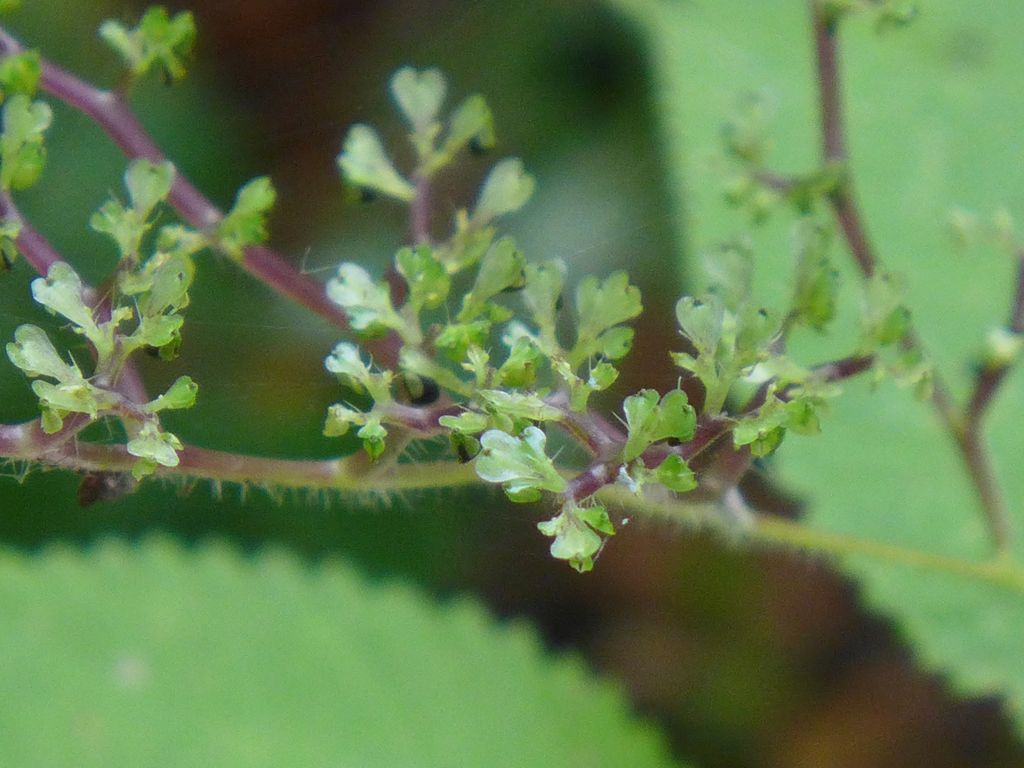
Right now it’s too hot to wear long pants while hiking, but I wear them anyway to protect my legs from poison ivy and stinging nettle.
Stinging nettle (Urtica dioica) and our native wood nettle (Laportea canadensis) are hard to avoid in early September. Three to seven feet tall, they lean into the trail completely coated with hollow stinging hairs that contain histamines and painful chemicals. The wood nettle plant is shown below with the closeup circled in red.
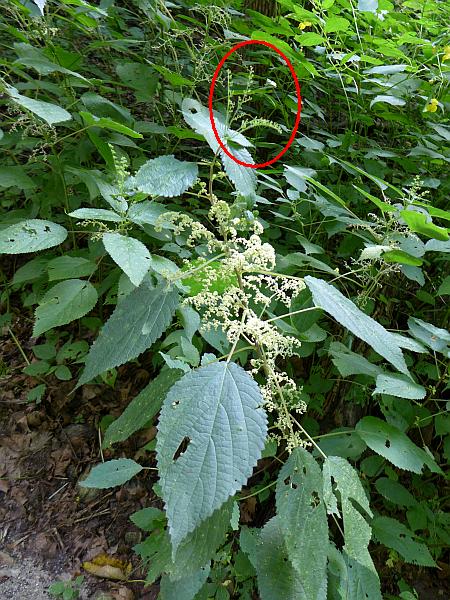
A gentle brush against the plant causes the hollow hairs to detach and become needles in your skin. The sting is memorable. For those desperate to hold the plant a firm grasp flattens the hairs so that fewer penetrate. This is counter-intuitive and not for the faint of heart.
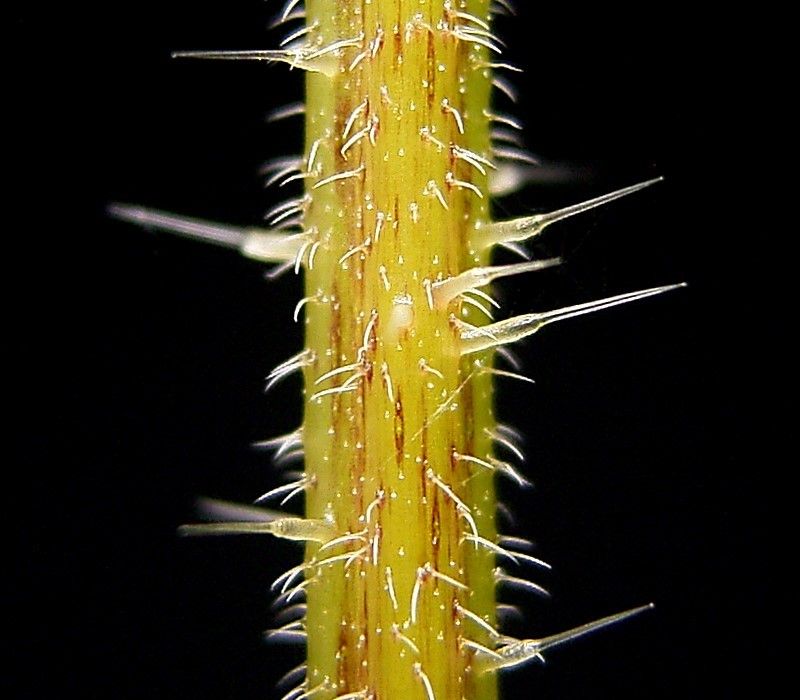
That’s the bad news, here’s the good. Nettles are the host plants for quite a few butterflies and moths. Here are two North American butterflies whose caterpillars rely on them.
The Red Admiral butterfly (Vanessa atalanta)
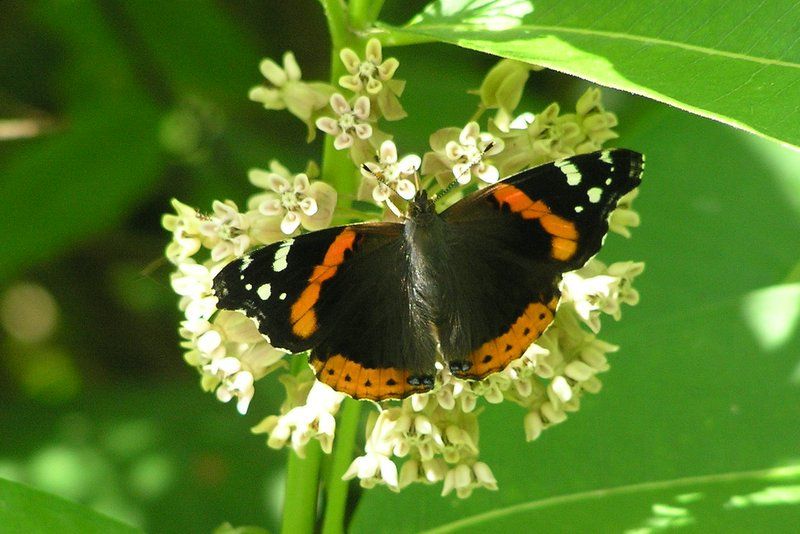
and the Question Mark (Polygonia interrogationis)
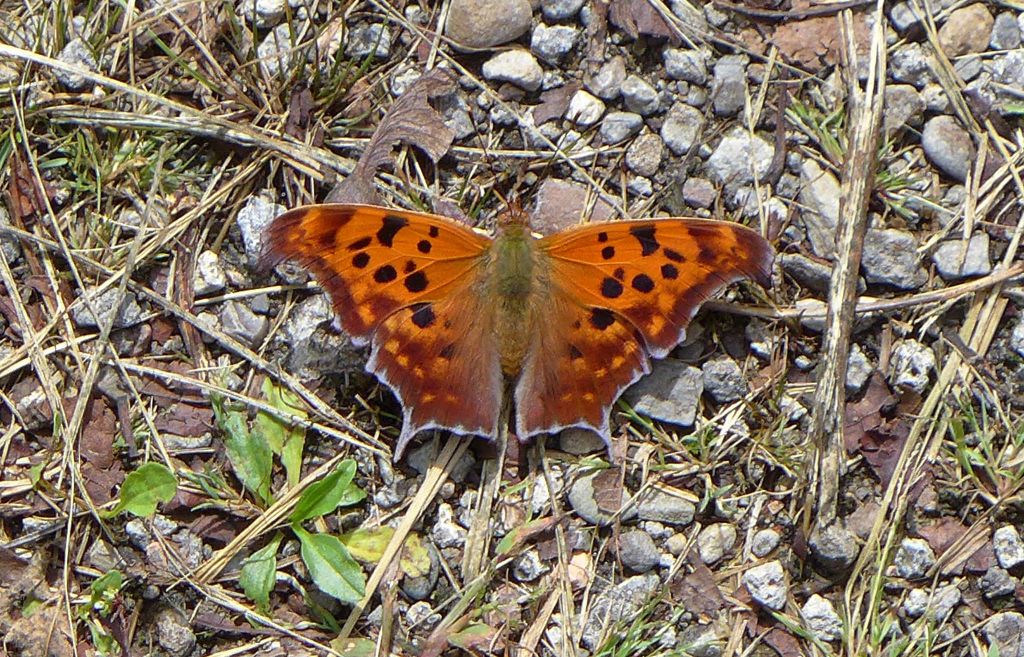
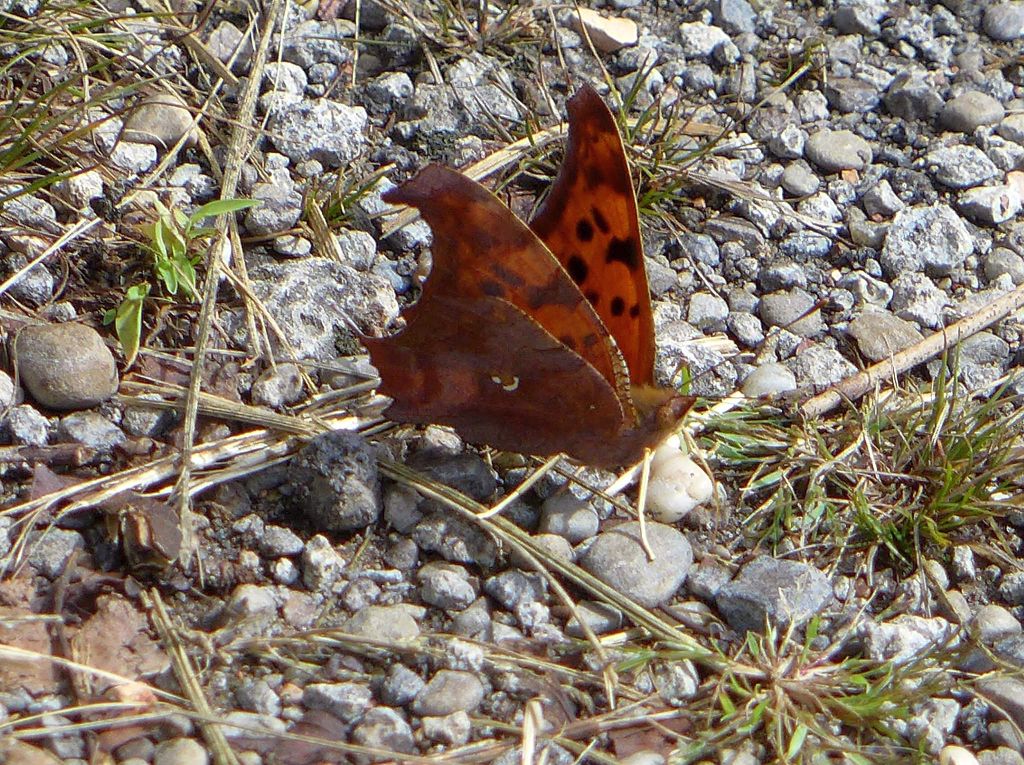
As with many things, a closer look reveals both pros and cons.
UPDATE: Another good thing (sort of). Several readers have pointed out that stinging nettle is edible. Yes, it is. My 1975 edition of The Joy of Cooking has a recipe for nettle soup. The first step is: “Using rubber gloves to protect you from the stinging nettles, remove the central stem from 1 quart of young nettle tops.”
You’d have to gather a quart of young nettle tops. No thank you!
(photo credits: wood nettle and question mark photos by Kate St. John; closeup of stinging nettle stingers from Wikimedia Commons, red admiral butterfly by Dianne Machesney)
Stinging nettle is supposed to have medicinal properties too. Tea made from the leaves is a natural allergy relief tonic and it has benefits for UTIs as well.
https://draxe.com/stinging-nettle/
I always thought that stinging nettle was an edible plant, once it’s been boiled (cooked) of course.
Yes, Barb, it is edible. I have a recipe for nettle soup, the first step of which is: “Using rubber gloves to protect you from the stinging nettles, remove the central stem from 1 quart of young nettle tops.”
… That would be after you’ve gathered a quart of young nettle tops. No thanks.
The leaves are known to be deeply nutritive as a food and as a tea, able to improve skin, hair, and nail health. Some might also know the seeds to contain tonifying qualities both of the Yang energy and also building deep Kidney Jing.